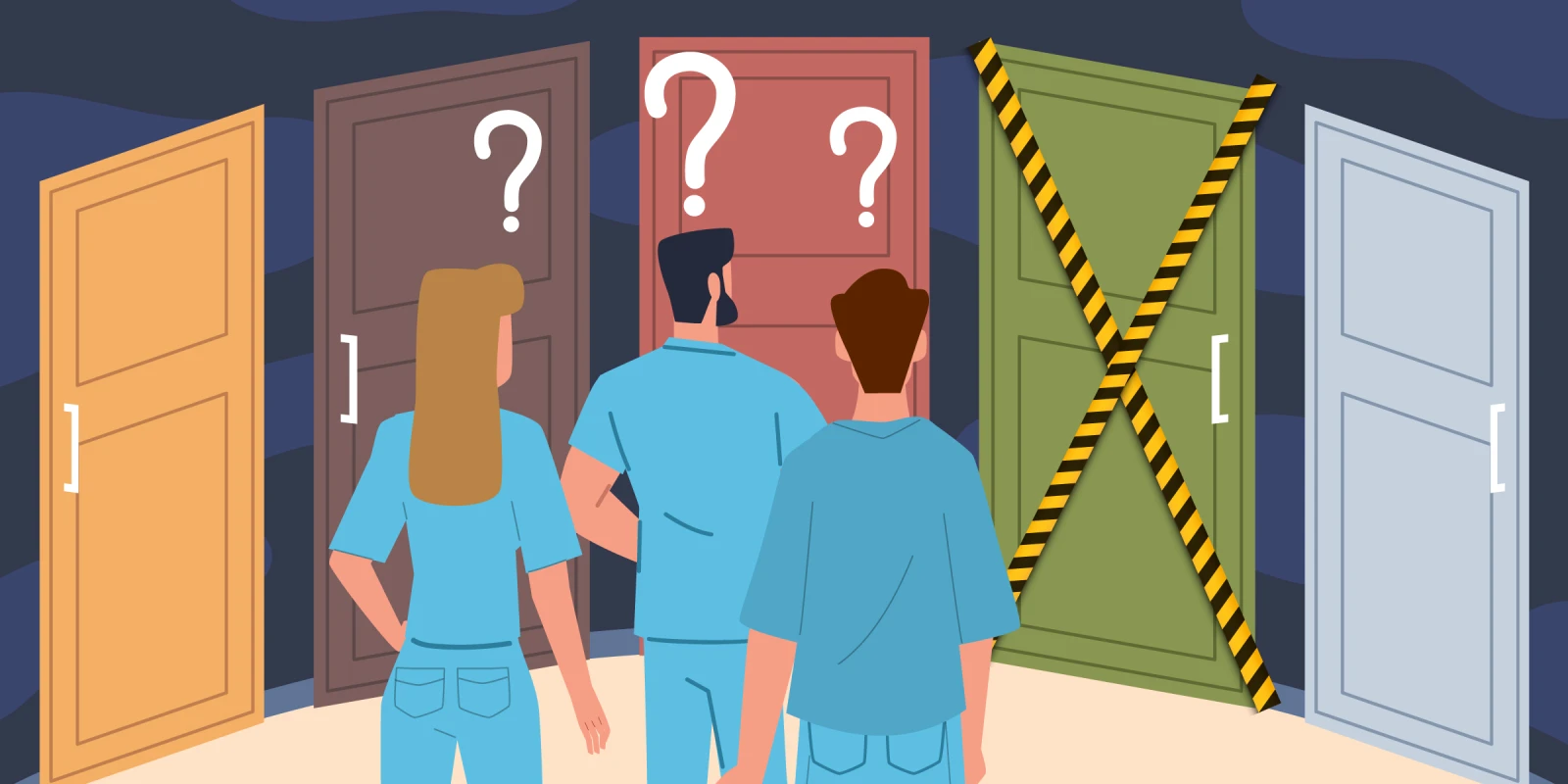I still remember my very first patient. I remember his face exactly, and the expression on it when I first walked into the room. I remember where his room was located and the direction he was facing. I remember that his diagnosis was “dog bite” and can picture exactly what the pitbull wounds looked like on his anterior midthigh. It was nearly 15 years ago, but it feels like yesterday. It was glorious. I was a first-year medical student, and my school allowed each of us to escape the doldrum of endless cramming for an eight-hour shift in the ED. Like a starving child taken to a royal feast, this felt spectacular, indulgent, right. Looking back on it now, nothing terribly interesting happened during that first shift. But to me it was all fascinating.
I returned to our familiar auditorium the next day invigorated. Studying didn’t seem so bad now that I had tasted the promised future fruits of my current labor. Now that I had been awakened, I could see it in my fellow classmates when they returned from their spin in the ED.
“How was it?”
“What?”
“Your ED shift?”
“Oh my goodness, it was fantastic. I think I might go EM.”
“Me too, or at least it’s definitely on my short list.”
For over a year, it seemed as though 80% of my class was going to pursue a career in EM. We eventually gained exposure to a multitude of other specialties and sorted ourselves fairly evenly across the various options. But even though many of us ultimately chose a field other than EM, few could forget the initial excitement that one short shift in the ED provided.
When I heard that the field of EM was hit with a historic number of unfilled categorical spots (more than 500) in this most recent Match, I was flooded with a range of emotions. Our entire hospital-based care system relies so heavily on well-trained and efficient EM physicians to screen and appropriately direct patients as they enter the health care system. Is our current strategy of early-care delivery going to crumble? Perhaps my deepest reaction to this news was sadness. As I tried to analyze how this had happened, I asked myself how so few students had been bitten by the EM bug. After all, almost none of us had been immune to its initial allure.
And then it hit me: No students were being bitten by the EM bug, the trauma surgery bug, or the bug of any other speciality affected by medical school COVID-19 restrictions. I have always worked with students — always, with the exception of the pandemic. As a trauma surgeon, I spend much of my time in the ED and often operate on patients long before even a rapid COVID-19 test would have time to bear its result. I have seen medical schools enact policies restricting students from interacting with any patient who does not have a recent negative COVID-19 test in the system. This clearly makes it impossible for students to rotate in the ED. Other schools simply refused to allow their students to rotate on trauma for a year or more, citing our exposure to patients with unclear COVID-19 status as their reasoning.
This entire time, I had been heartbroken about the number of students who might never realize that their calling was surgery, even though they were often allowed to rotate on elective services. My focus on their lack of trauma experience blinded me; when I look back now, I realize that I have not seen a single medical student in any ED since the pandemic began. No wonder the students this year avoided EM — they all chose fields with which they had experience, and for so many, this meant EM wasn’t even in the running.
On the one hand, I can understand the desire of medical school administrators to protect their students. No one wanted to get COVID-19, and no one wanted to think about students getting COVID-19 on their account. But on the other hand, every field of medicine has been touched by the pandemic, and the job of medical schools is to prepare students for their future jobs in the real world. Sheltering them from danger may feel good in the short term, but we are still sending them into the same dangerous world a few months later, except now unprepared. And out there, walking around right now, are over 500 students who didn’t find their life calling in EM, as they would have in pre-pandemic times. The pandemic is waning, vaccines and boosters are available, PPE has been proven to work. Perhaps it’s time to rediscover our job as educators and allow our students the freedom to rise to the occasion.
In what ways did your medical training prepare you for working in the real world? In what ways did it not? Share your experience below.
Dr. Danielle Pigneri is a trauma and acute care surgeon practicing in the Dallas-Fort Worth metroplex. When not working, she enjoys her other job, being a mom to two sweet young children. Dr. Pigneri is a 2022-2023 Doximity Op-Med Fellow.







